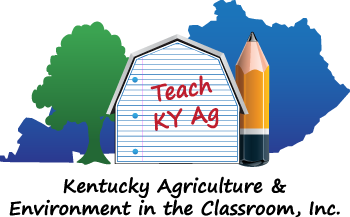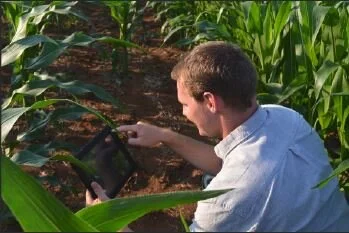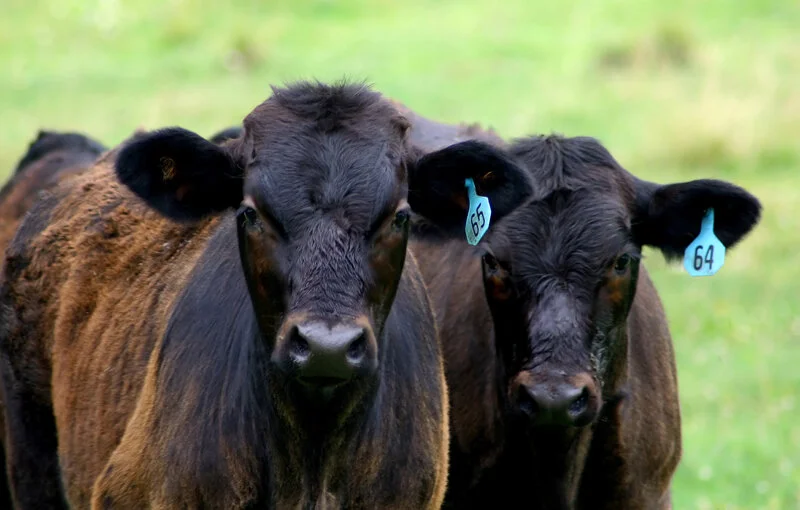4th Grade Science: This Google Slide allows students to move labels to the correct part of the flower.
Read MoreThis worksheet aligns to 4th Grade Common Core Language standards and is a fun companion activity to our Kentucky Farms Feed Me Virtual Field Trip to a Pig Farm.
Read MoreIntermediate: Students will identify how the basic needs of a growing chick are met during egg incubation. Activities include identifying and diagramming the parts of an egg and hatching eggs in class.
Read MoreJoin Kylie as she visits Sisk Farms in Hopkinsville to learn about corn. Kylie also talked with Dr. Chad Lee, an agronomist, with the University of Kentucky.
Read MoreJoin Kylie as she visits with farmer Barry Alexander, of Cundiff Farms in Cadiz, Kentucky to learn about soybeans.
Read MoreCreate a corn starch based plastic material or try some other fun corn creations using corn starch.
Read MoreView profiles of people who work in Kentucky agriculture, or trained in Kentucky for their career.
Read MoreThis fun activity helps students learn who is responsible for getting milk from the cow to the glass. It also teaches interdependence.
Read MoreSettlers first brought cattle to Kentucky in 1775, with aid from famed explorer Daniel Boone. Since that time, cattle farming has played an important role in Kentucky’s agricultural economy. In fact, Kentucky farmers raise more beef cattle than any other state east of the Mississippi River!
Read MoreStudents will explain the importance of the beef cattle industry, including the products cattle produce, the production process from farm to plate, and how cattle can utilize and obtain energy from grass and other forage.
Read MoreKentucky kids visit a beef cattle farm and have many questions. Kentucky has the largest number of beef cattle east of the Mississippi River due to the high quality grasses and forages that grow here. Most all Kentucky beef cattle spend the majority of their lives on pasture.
Read MoreLearn about agriculture and farming in your community by choosing the county where you live.
Read MoreStudents will be introduced to the basic needs and functions of living things, introduced to stimulus and response, develop an understanding of the basic needs of shelter and space as they relate to horses, build structures using common materials and explore ways to solve problems when building structures, explore how large objects or structures can be made from smaller parts.
Read MoreStudents will be able to identify and list adaptations of various animals, understand the difference between behavioral and physical adaptations, construct an argument based on lab simulation that camouflage increases the likelihood of an organism’s survival, develop an understanding of how horses have adapted coat color overtime to meet their needs, escape predators, and continue those successful traits in their offspring.
Read MoreStudents will understand the need to supplement natural food sources when the environment may not fully meet the needs of an organism, be introduced to carrying capacity, develop an understanding of the basic needs of horses, develop an understanding of the basic nutritional elements needed by most organisms and how these nutrients can benefit the organism and their offspring.
Read MoreStudents will understand the difference between monocular and binocular vision as it relates to depth perception, experience how parallax contributes to depth perception, construct an argument based on experimentation that binocular vision allows for greater depth perception, and be able to identify that vision is based on information received through photoreceptors and translated in the brain.
Read MoreStudents will develop an understanding of why certain geographical areas in Kentucky provide better habitats for breeding and raising horses, how weather events contribute changes on the earth’s surface, how weathering and erosion can leak calcium carbonate into the ground water for animal consumption, and they will construct an argument based on experimentation that limestone in Kentucky’s soil is released into the water through the process of weathering and erosion.
Read MoreEthanol is a common alcohol made by fermenting the sugar and starch components of renewable plant materials by using yeast. Humans discovered ethanol not long after they figured out how to put fire to good use.
Read MoreFind lessons, fact sheets, and resources for grades K-12 on biofuels, renewable fuels, ethanol, and biodiesel.
Read MoreBiodiesel is a renewable, clean-burning diesel replacement made from a diverse mix of feedstocks including recycled cooking oil, plant oils (primarily soybean oil), and animal fats.
Read More




















